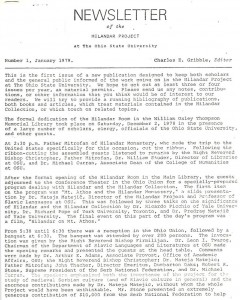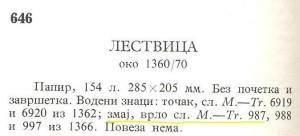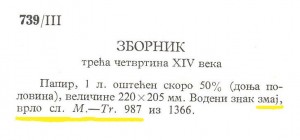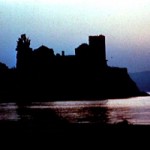The 44th Annual Association for Slavic, East European and Eurasian Studies (ASEEES)* Convention is being held in New Orleans, November 15-18, 2012. This year’s conference theme is “Boundary, Barrier and Border Crossing.”
Among the panels listed in the convention program, one that promises to be of interest to medieval Slavic scholars is Slavia Orthodoxa & Slavia Romana: A Round Table in Memory of Professor Riccardo Picchio, chaired by Paul Alexander Bushkovitch (Yale), with participants Giovanna Brogi Bercoff, Harvey Goldblatt (Yale), Michael A. Pesenson (U of Texas at Austin), and Marina Swoboda (McGill, Canada). (See page 13 of Cyrillic Manuscript Heritage 30 for Predrag Matejic’s obituary of Riccardo Picchio.)
Also intriguing is Reimagining Europe: Kievan Rus′ in the Medieval World: Christian Raffensperger‘s Bold New Hypotheses – (Roundtable), sponsored by the Early Slavic Studies Association, chaired by David Maurice Goldfrank (Georgetown University), with participants Brian James Boeck (DePaul University), Ines Garcia de la Puente (University of St. Gallen, Switzerland), Elena Boeck (DePaul), and Christian Raffensperger (Wittenberg University).
*formerly, the American Association for the Advancement of Slavic Studies (AAASS)









 The Very Rev. Dr. Mateja Matejic presented an update on the Hilandar Research Project, representatives from various countries reported on the status of Slavic and medieval studies, and recommendations regarding the future work and development of the Hilandar Research Project were made by working groups composed from 45 scholars of 31 institutions of higher education in North America and Europe.
The Very Rev. Dr. Mateja Matejic presented an update on the Hilandar Research Project, representatives from various countries reported on the status of Slavic and medieval studies, and recommendations regarding the future work and development of the Hilandar Research Project were made by working groups composed from 45 scholars of 31 institutions of higher education in North America and Europe.






